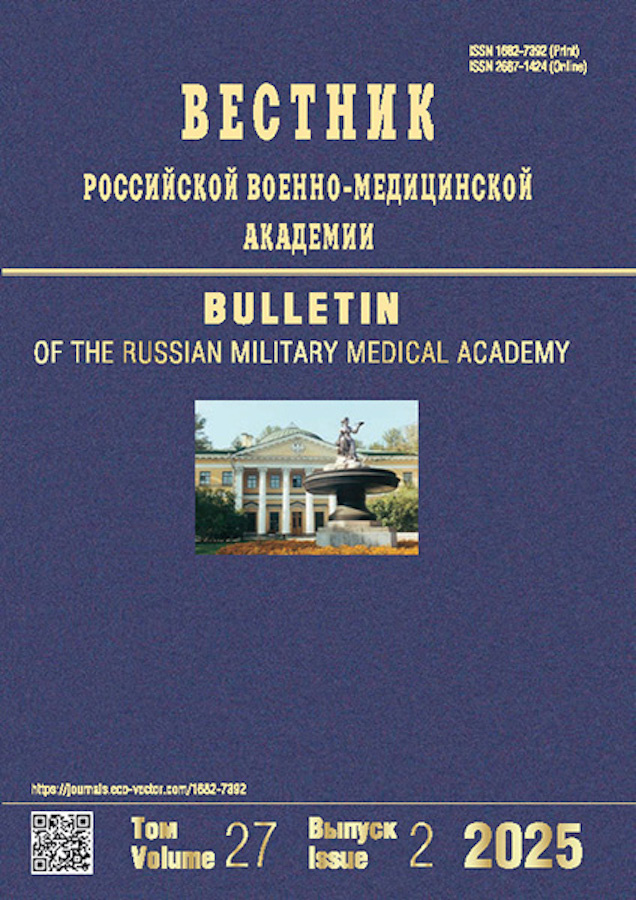Role of Extemporaneous Medications in Inpatient Care: A Comparative Analysis with Their Industrial Counterparts
- Authors: Miroshnichenko Y.V.1, Alexeychuk E.Y.2, Enikeeva R.A.3
-
Affiliations:
- Saint Petersburg State Chemical and Pharmaceutical University
- Pokrovskaya City Hospital
- Rosbio LLC
- Issue: Vol 27, No 2 (2025)
- Pages: 203-210
- Section: Original Study Article
- Submitted: 06.03.2025
- Accepted: 25.03.2025
- Published: 23.06.2025
- URL: https://journals.eco-vector.com/1682-7392/article/view/676906
- DOI: https://doi.org/10.17816/brmma676906
- EDN: https://elibrary.ru/WGDCMU
- ID: 676906
Cite item
Abstract
BACKGROUND: Currently, regarding the continuously rising healthcare expenditures, the search for ways to optimize costs and improve budget spending efficiency is becoming increasingly relevant. Unlike pharmaceuticals mass-produced by chemical and pharmaceutical manufacturers, their pharmacy-compounded counterparts have significant competitive advantages.
AIM: The study aimed to assess the advantages of extemporaneous medications over their industrial counterparts using the example of a multidisciplinary medical institution — Pokrovskaya City Hospital (St. Petersburg).
METHODS: The study’s theoretical and methodological basis included legislative and regulatory acts governing the circulation of medicines and pharmaceutical activities. This includes compounding and quality control of extemporaneous medications; scientific works on organizing pharmaceutical supply, pharmaceutical technology, and quality control of medicinal products and other scientific, methodological, and reference data on the topic under study; and reporting documentation from Pokrovskaya City Hospital.
RESULTS AND DISCUSSION: This study substantiates the significance of certain extemporaneous medications over their industrial equivalents based on the needs of medical institutions. It demonstrates how pharmacy-based compounding contributes to more rational use of financial resources and improved quality of medical care. The study emphasizes that pharmacy compounding should comply with current legislation and regulatory acts governing pharmaceutical activities and be based on clearly defined instructions, protocols, and quality standards. Furthermore, collaboration with regulatory authorities and participation in the pharmacovigilance system ensure that extemporaneous medications meet safety and efficacy requirements. A comprehensive analysis is required to assess the advantages of extemporaneous medications over their industrial counterparts — one that considers the cost of raw materials, pharmaceutical personnel labor, equipment depreciation, and quality control expenses. A crucial factor is comparing the production cost of extemporaneous medications with the prices of industrial equivalents, including logistics, storage, and related expenses.
CONCLUSION: Pharmacy compounding is a promising and potentially cost-effective direction, provided that it is implemented with due consideration of all critical factors. Proper planning, quality control, and compliance with legal regulations will enable pharmacies to optimize the healthcare system, reduce medication procurement cost, enhance the flexibility and responsiveness of drug supply, and provide opportunities for individualized dosing and composition adjustments to meet specific patient needs.
Full Text
About the authors
Yuri V. Miroshnichenko
Saint Petersburg State Chemical and Pharmaceutical University
Email: vmeda-nio@mil.ru
ORCID iD: 0000-0002-3645-2071
SPIN-code: 9723-1148
Dr. Sci. (Pharmacy), Professor
Russian Federation, Saint PetersburgEkaterina Yu. Alexeychuk
Pokrovskaya City Hospital
Author for correspondence.
Email: vmeda-nio@mil.ru
ORCID iD: 0000-0001-9241-9519
SPIN-code: 8730-4623
Cand. Sci. (Pharmacy)
Russian Federation, Saint PetersburgRimma A. Enikeeva
Rosbio LLC
Email: vmeda-nio@mil.ru
ORCID iD: 0000-0002-6058-7187
SPIN-code: 4917-6516
Cand. Sci. (Pharmacy), Associate Professor
Russian Federation, Saint PetersburgReferences
- Mamedov DD, Yurochkin DS, Golant ZM, et al. Past, current and future of legal regulation of drugs compounding in the Russian Federation. Pharmacy and Pharmacology. 2023;11(3):176–192. doi: 10.19163/2307-9266-2023-11-3-176-192 EDN: QXJFKF
- Egorova SN. Can a medical organization do without extemporal drugs? Modern organization of drug supply. 2021;8(1):42–46. doi: 10.30809/solo.1.2021.11 EDN: HUUMCO
- Alekhin AV, Erivantseva TN, Ryazhenov, et al. A new role of extemporal manufacturing in the regulation of access to medicines on the market. Pharmacy and Pharmacology. 2023;11(2):161–172. doi: 10.19163/2307-9266-2023-11-2-161-172 EDN: IOXLTV
- Narkevich IA, Medvedeva DM, Nemyatykh OD, et al. Pharmaceutical compounding in Russia: analysis of open competitive procurement and segment prospects. Medical technologies. Assessment and choice. 2023;(4):64–74. doi: 10.17116/medtech20234504164 EDN: YNXESG
- Pereskok AV, Savchenko IA, Korneeva IN, et al. Development of a standard operating procedure “Quality control of sodium chloride solution 0.9% (350 ml) for infusions (Intra-pharmacy preparation) in the conditions of pharmacy organizations carrying out the manufacture of medicines. Scientific Bulletin of Omsk State Medical University. 2024;4(1):37–46. doi: 10.61634/2782-3024-2024-13-37-46 EDN: INLYQU
- Shishova LI, Yarutkin AV, Bagirova VL. Current and future pharmacopoeial requirements for the quality of extemporaneous medicinal products: a review of regulatory standards. Regulatory Research and Medicine Evaluation. 2024;14(4):386–399. doi: 10.30895/1991-2919-2024-14-4-386-399 EDN: AYDBQW
- Farrakhov AZ. Compounding pharmacy restoration as a current healthcare priorit. Regulatory Research and Medicine Evaluation. 2024;14(4):380–385. doi: 10.30895/1991-2919-2024-14-4-380-385 EDN: RNFAWW
- Zaryvnykh AA, Pakhomova YO, Redikultseva PY. Pharmaceutical technology to be! In: Current issues of modern medical science and health care: Collection of articles of the VIII International scientific and practical conference of young scientists and students. Yekaterinburg: Ural State Medical University of the Ministry of Health of the Russian Federation; 2023. Р. 3006–3011. EDN: FDPRTB (In Russ.)
Supplementary files







